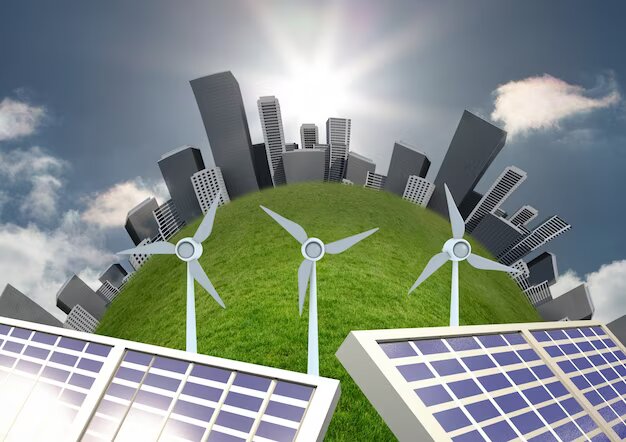Energy Audit

Rapidly rising energy prices and the fuel crisis with geo-political issues have led countless companies to make energy efficiency an integral part of their sustainability strategy. Operators of office buildings, retail chains, industrial sites, residential buildings, and schools are faced with the challenge to analyze the primary sources of their energy consumption and expenses, and ways in which to reduce them and prevent energy leakages or waste.
The energy audit provided by THIRD EYE is an external review of the energy-consuming unit (existing building, processes), to identify actions that can lead to a decrease in energy consumption within a reasonable time period to realize a return on investment. Different scenarios are submitted and considered, based on each specific case, making the recommendations and conclusions accurate and reliable.THIRD EYE provides you with different options for energy audits, meeting your needs for energy management, while adapting to specific industry and country requirements:
Initial Visit or Base Line Energy Audit: Determine Scope of Audit, Verify records of electricity bill, gas bill, bench-marking.
Diagnostic Audit or Details Energy Audit, Data inventory, energy use patterns, air emission, identifying energy efficiency potentials
Follow up Audit: Comparative analysis with EnPI, Cost-benefit analysis.
The different steps of an energy audit
THIRD EYE can help organizations improve energy efficiency for all energy consuming processes: heating, cooling, lighting, production equipment, transportation, ventilation and more. Recommendations are classified by energy payback time and return on investment. THIRD EYE capitalizes on existing knowledge and expertise to make suggestions for ways in which you can best use your energy devices and communicate new guidelines to stakeholders (site meetings, users and operators’ awareness, posters creation, public information).
Base Line Energy Audit
In a preliminary energy audit, readily available data are mostly used for a simple analysis of energy use and performance of the plant. This type of audit does not require a lot of data collection and measurement. These audits relatively take a short time and the results are more general, providing common opportunities for energy savings. The economic analysis is typically limited to calculation of the simple pay-back period, or the time required paying back the initial capital investment through realized energy savings.
- Audit plan
- Initial walk-through
- Collecting energy bills and available data
- Preliminary analysis
Details or Diagnostic Audit
Diagnostic Audit is a comprehensive audit, where detail data is required. Measurements and data inventory are usually conducted on different energy systems (pump, fan, compressed air, steam, process heating etc.) are assessed in detail. Hence, the time required for this type of audit is longer than that of preliminary audits. The results of this audit are more comprehensive and useful since they give a more accurate picture of the energy performance of the plant and more energy recommendations for improvements.
-Data inventory & measurements
-Analyzing energy use patterns
-Benchmarking and comparative analysis
-Identifying energy efficiency potentials -Report submission with the recommendation, cost-benefit analysis and payback period.
Follow-Up Audit
Follow-up Audit is the analysis of the outcome after recommendations of improvements are implemented. This will indicate how much cost is minimized and how energy is being saved.
Data inventory & measurements, Review with bench-marking and comparative analysis, -Identify the position with energy performance indicators -Cost benefit analysis
Scope of work:
There are various energy systems that can be found in almost all industrial plants such as motor systems, steam systems, compressed-air systems, pumps, and fan systems. These are so-called “cross-cutting” technologies. Recommendations will be given for the publications on sector-specific energy-efficiency measures for various industrial sectors that can be used by energy auditors to go beyond the cross-cutting technologies and identify the energy saving opportunity in the processes like: Lighting systems, compressed air systems, pumping systems, exhaust fan systems, Steam systems, process heating systems, Electric motors, electrical demand control, analyzing Energy bills, BMS etc. To learn more about THIRD EYE’s Energy Audit, pls click on: https://youtu.be/HW1ToMZsYUk
For further inquirey, pls click on our customer inquiry form:
https://docs.google.com/forms/d/e/1FAIpQLSceazFa25VuB_y5v6PmzNbEPZpvMLU1a8Vou-ymUzwRqM0i8g/viewform
